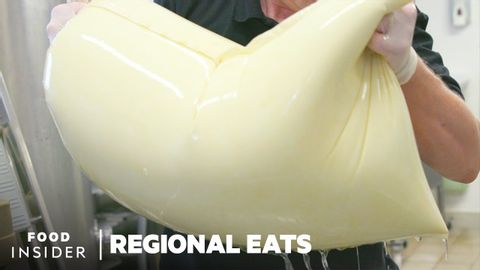
Subtitles & vocabulary
How Icelandic Skyr Yogurt Cheese Is Made | Regional Eats
00
林宜悉 posted on 2020/11/06Save
Video vocabulary
literally
US /ˈlɪtərəli/
・
UK
- Adverb
- In a literal manner or sense; exactly as stated.
- Used for emphasis to describe something that is actually true, often to highlight surprise or intensity.
B1
More process
US /ˈprɑsˌɛs, ˈproˌsɛs/
・
UK /prə'ses/
- Transitive Verb
- To organize and use data in a computer
- To deal with official forms in the way required
- Noun (Countable/Uncountable)
- Dealing with official forms in the way required
- Set of changes that occur slowly and naturally
A2TOEIC
More consume
US /kənˈsum/
・
UK /kən'sju:m/
- Transitive Verb
- To eat, drink, buy or use up something
- To take all your energy; focus the attention
A2TOEIC
More texture
US /ˈtɛkstʃɚ/
・
UK /ˈtekstʃə(r)/
- Noun (Countable/Uncountable)
- Quality from different elements, as in music
- Look and feel of a substance or material
- Transitive Verb
- To give a particular look or feel to a surface
B1
More Use Energy
Unlock All Vocabulary
Unlock pronunciation, explanations, and filters
